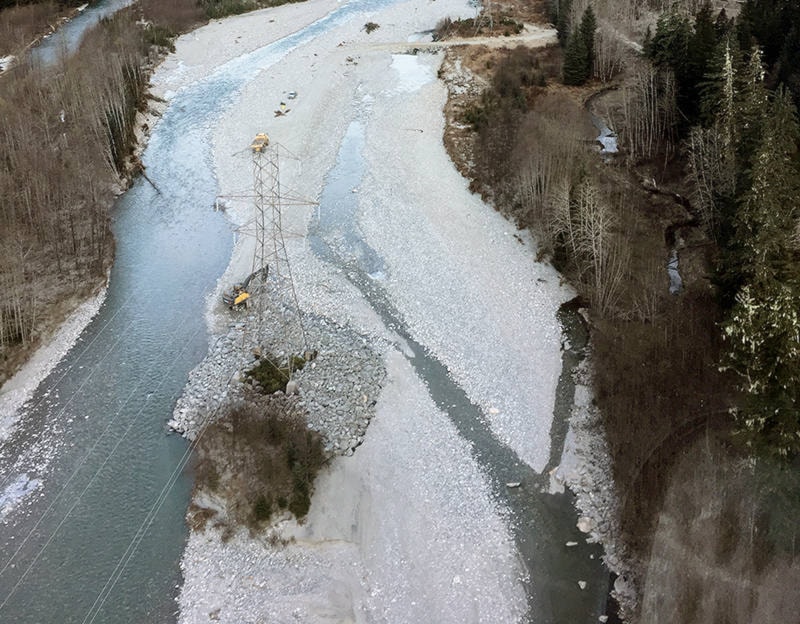The power supply to Rio Tinto’s smelter was also threatened by the recent heavy rains that caused millions of dollars of damage to infrastructure throughout the district.
Rio Tinto B.C. Works senior advisor communications Katherine Voigt said the foundation of one of the towers that supply the smelter with power generated by the Kemano power plant was slightly damaged by the heavy rains.
“The week of October 23 saw a significant amount of rain across the Kitimat, Kemano, and Nechako Reservoir areas,” said Voigt. “This led to record flows in the Kemano River – over 950m3 per second.”
She said following the heavy rains Rio Tinto conducted a survey of the power lines and supporting structures between Kitimat and Kemano and discovered that the rock protection under Tower 26 had been washed away.
She said two other towers also had water at their base and that access roads had been damaged in a number of places.
Employees and community partners scrambled to get into the area to assess and repair the damage, and that despite the damage, smelting and power operations continued safely and without interruption.
“Fatigue management plans and rostering were a key part of the actions taken during the situation and once it was resolved,” added Voigt.
B.C. Works general manager Gareth Manderson said with the new AP40 prebake technology installed during the Modernization Project, the time to bring the smelter back online smoothly after a loss of power is quite limited.
He said, however, that the B.C. Works’ staff rallied together to quickly prioritize contingency planning, while maintaining safe and stable round-the-clock operations.
“We are fortunate to have very dedicated employees at B.C. Works who know the aluminium business well and can bring innovative solutions to the table when difficulty strikes,” said Manderson.
“We had maintainers working to test if alternate fuels could work with our systems and we had power operations personnel looking to source rock supply in the Kemano valley.”
He said the situation was further aggravated by the washout that occurred along the Copper River, which exposed a portion of the natural gas pipeline.
“Pacific Northern Gas informed Rio Tinto of the actions they were taking to address the situation and also warned that it was possible the supply of gas to the smelter may have to be reduced or stopped completely,” said Manderson.
“Luckily, a loss of power or gas did not occur but this situation provided us with an opportunity to review and enhance our contingency planning.”
He said as a result B.C.Works now has a more hardy back-up plan if similar situations arise in future.
“We take the responsibility we have to our community stakeholders in situations like this very seriously,” said Manderson. “We need to plan for every possible scenario so that we can minimize any potential impacts. This goes beyond our business, where a loss of hydropower or natural gas supply – let alone both – would have serious consequences.”
He said he was exceptionally proud of staff at all levels who worked together to see the challenge through, and was grateful for the “unparalleled collaboration with Pacific Northern Gas during this unsettling time”.
